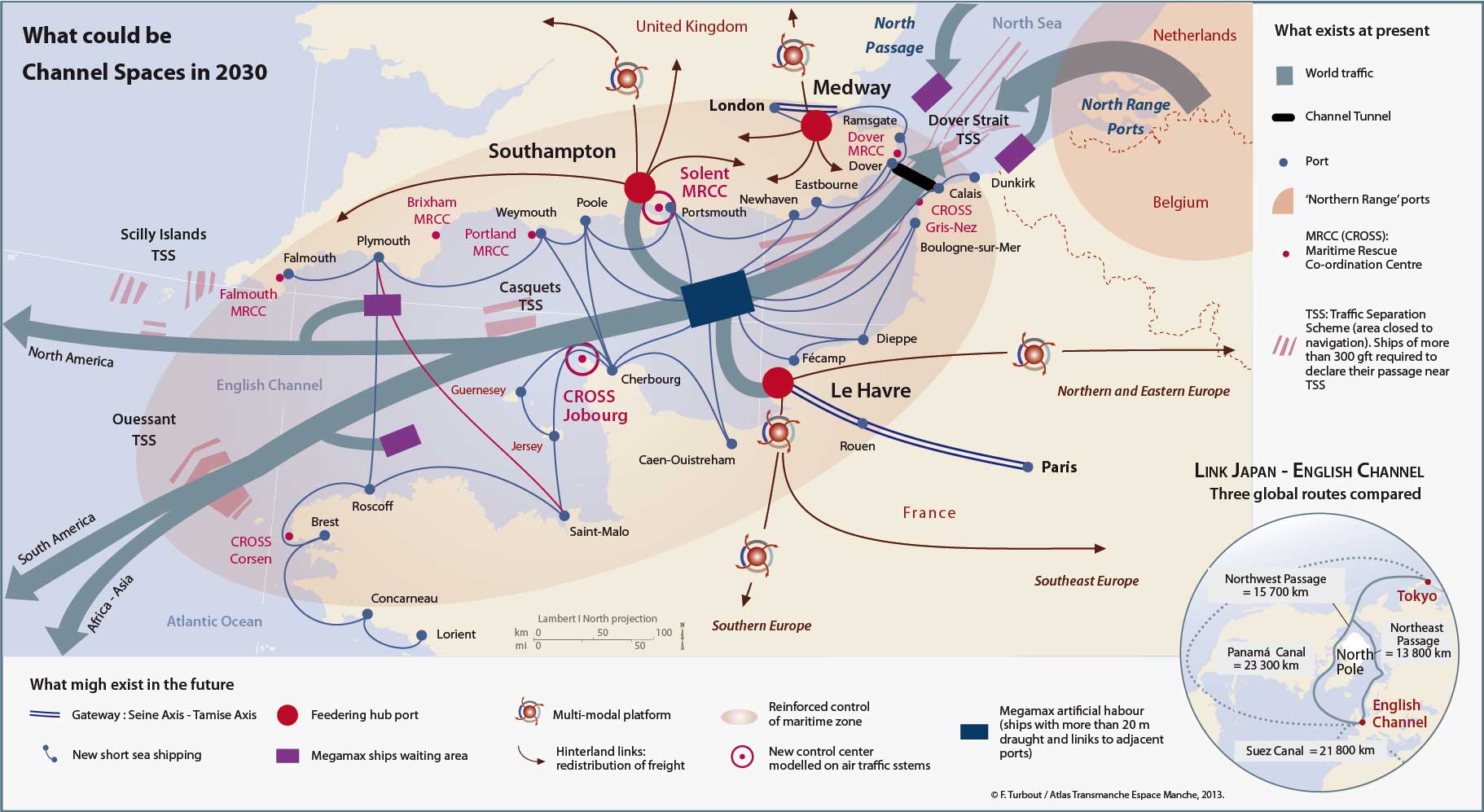

 Strategic Vision
Strategic Vision- Perspectives 2030 : Energie FR
- Perspectives 2030: Transport
The cartographic representations making up portfolio combine to present the rich tapestry of activities found in the Channel. Clearly the picture is constantly evolving, which in turn begs the question of what we might expect to see in 30 years time. The key parameters shaping the direction of probable scenario are already in evidence -the growing reach of globalisation, the ever present role of new technology and the political sensitivities of environmental impact. At the centre of this triptych is the whole issue of social acceptability, particularly in respect of major infrastructural developments (and not least the attendant questions relating to conflict resolution when protests avice). What is certain is that the pace of change is likely to be both intense and rapid.
So will the Channel continue to hold is position as a premier global maritime transport corridor. Already the 'Northern Range' ports have seen their dominance giving way to the rapide rise of those in the Far East indeed a 'global shift' in favour of Asia and Pacific. However, such trends do not preclude the Channel's continued strategic role, neither does the opening up of new sea routes, as in the case of the Artic North West passage (or even the North East passage), still decades away. What is more as the world's new global workshop, and the flow of manufactured products from Asia onto the European market. Much of the latter traffic will be via the Channel, thereby boosting its continued strategic importance as an artery of trade.
These new geographical and economic realities have been accompanied by an increasing massification of maritime transport in the search for greater energy and logistical efficiency. In December 2012, the CMA CGM 'Marco Polo', the world's largest container ship (16 000 TEUs), entered the Channel, only just able to manoeuvre its way through the Dover Strait. Such physical contraints suggest a new role for 'cabotage' (short sea shipping) and feedering in a re-organised system of sea transport in the Channel. The giant container ships could in the future be involved onto cross-docking platforms out at sea, for ownard transhipment via relay-vessels to Channel and 'Northern Range' ports. Such a radical reorganisation would need to hand with the development of new technologies, especially in the fields of ship propulsion and engines, in line with environmental and energy priorities.
As an economic sector, energy may well prove to be one of the key areas in the Channel's future development. Already a major transit corridor for oil distribution, as well as currently for nuclear power production and reprocessing, the Channel is likely to become an important locus of renewable energy generation. This stretch of sea harbours one of the greatest potential sources in the world, thanks to its offshore wind, sea currents and tidal swell. The large scale generation of renewable energy should now gain ground. The importance of installations already in place, as well as planned for, on the English side of the Channel is encouraging. With the continuing development of other technologies, the Channel is well positioned to play a key role in the region's future energy mix.
Even so, social acceptance will also play a vital role in this regards and dictate the speed of progress.
top
















